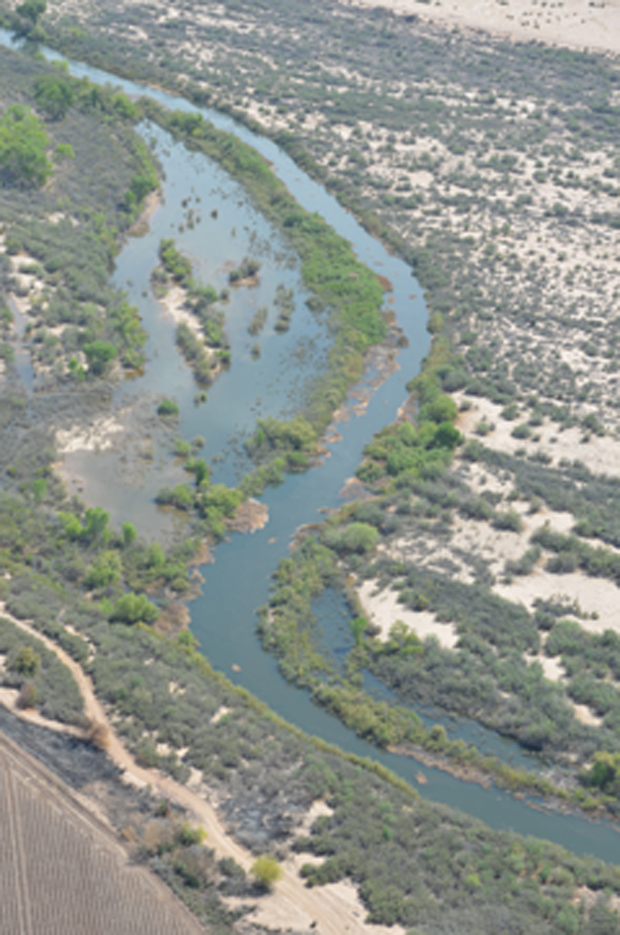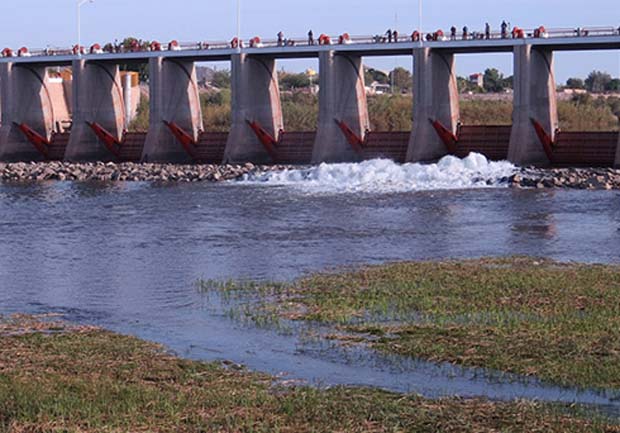The Unsung Heroes of the Colorado River Delta Pulse Flow

The Colorado River Delta pulse flow coursing through the arid Sonoran Desert. (Photograph by Jennifer Pitt, EDF, with support from Lighthawk)
Posted by Jennifer Pitt of Environmental Defense Fund in Water Currents on May 28, 2014.
[dropcap]T[/dropcap]his spring, the gates were opened at Morelos Dam, the furthest downstream in a string of infrastructure along the Colorado River that store and divert water to people and industries throughout the basin. Sitting approximately 100 river miles upstream of the Sea of Cortez, Morelos Dam has been the southern terminus of the Colorado River for most of the last half century, leaving the last leg of the river’s course unplumbed.
We have used the Colorado River to extinction, and without an allocated share of the river’s water, the delta that sits below Morelos has been left to dry. Straddling the U.S.-Mexico border, neither nation, and certainly no government agency, felt it had the jurisdiction to address the issues of the delta. Consequently, nearly two million acres of wetlands and riverside forests disappeared.
Then, in November 2012, the U.S. and Mexico signed a binational agreement, known as Minute 319, which committed to deliver environmental flows for the Colorado River Delta, including a one-time demonstration of a “pulse flow” of water intended to simulate, at a small scale, the spring floods that nature had delivered for eons. A private water trust joined in that commitment to deliver additional “base flows” to ensure that plants and animals would have water available to keep them alive after the pulse flow.
In addition to bringing much needed relief to the delta, Minute 319 also included a host of modern, flexible water management provisions, including sharing surpluses in times of plenty and reductions in drought, new rights for Mexico to store water in U.S. reservoirs, and binational investments in water conservation.
As logical as this course of action might sound, the political leeway and legal framework that allowed for these terms to be negotiated took years – and many players – to orchestrate.
I’m often asked how the conservation community got the powers that be to agree to the pulse flow. The answer is that, by including benefits for water users in all sectors in nine states (seven in the U.S. and two in Mexico) and two countries, we created an opportunity for cooperation too good to refuse. The benefits to water agencies managing and using water from the Colorado River are significant to the point that they not only allowed the pulse flow to occur, but in many cases became active participants in ensuring its success.
In short, it took many hands to lift the gates at Morelos Dam.


